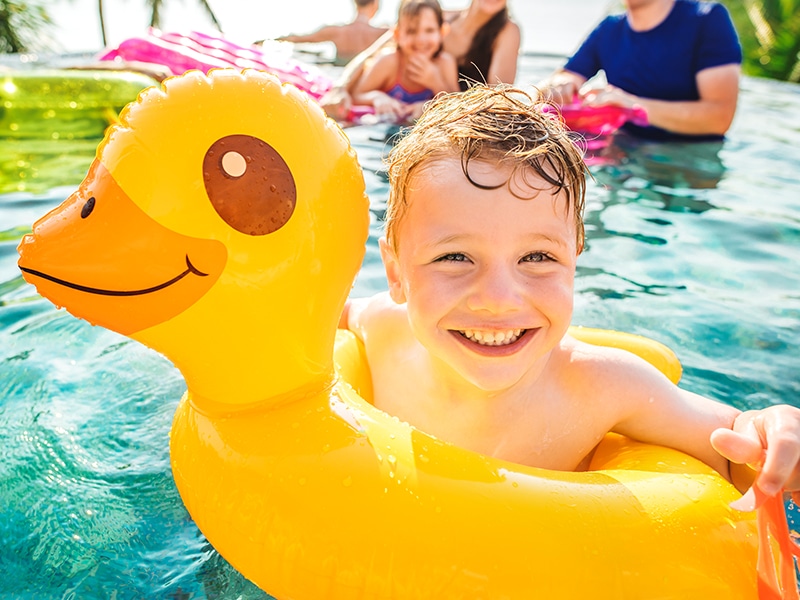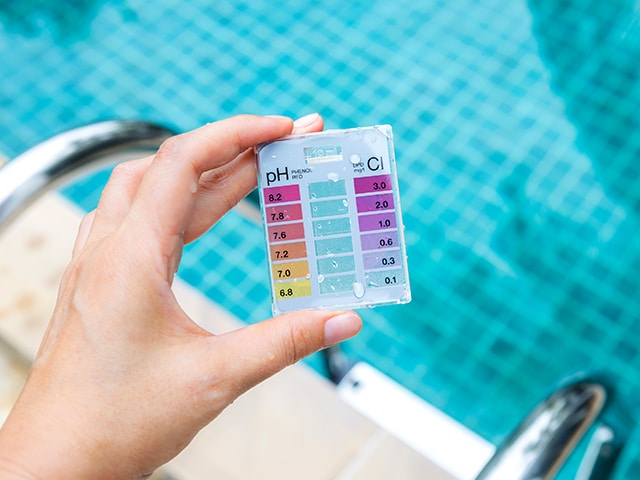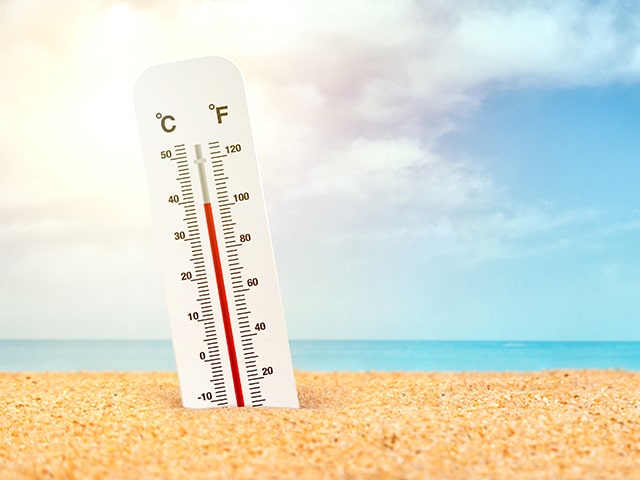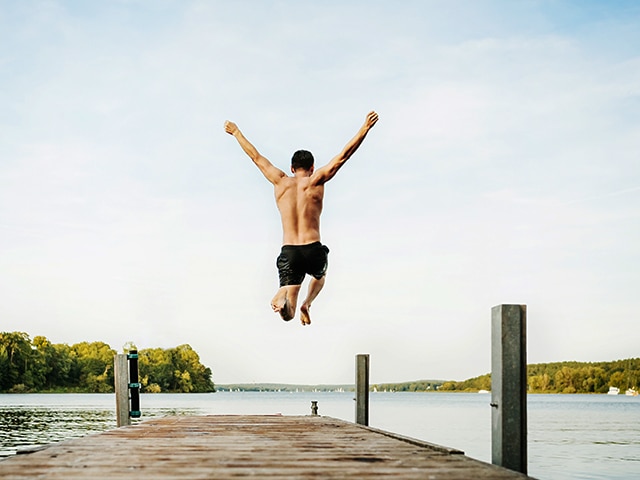Just as COVID-19 has changed the way we work, learn, and socialize, it’s also changed how we have fun. That includes taking a dip in a pool or lake this summer.
The good news is the water’s fine, so come on in. But like everywhere else, it’s the crowds you have to watch out for.
So, as families consider dipping their toes in the water to escape their homes and the heat, here are few things to remember:
Stay 6 feet apart
First, social distancing is still a must, says Ed Dominguez, MD, an infectious disease physician on the medical staff at Methodist Dallas Medical Center. It’s necessary to give others a wide berth because the coronavirus can travel a few feet through the air when an infected person coughs or sneezes.
“The issue is not the pool water itself but the swimmers interacting with each other both inside and outside the pool,” Dr. Dominguez says. “Early on, I think limiting the number of swimmers both in the pool and out, akin to what is being done in other public gathering places, is reasonable.”
Public officials agree. States, including Texas, are restricting access to these recreation centers as they reopen facilities in phases.
The water isn’t the worry
The Centers for Disease Control and Prevention (CDC) has found nothing to suggest the new coronavirus is spread through pools, hot tubs, or spas. In fact, disinfectants typically used to treat pools, such as bromine and chlorine, deactivate the virus.
“Theoretically, the pool is safe if the chlorine level is properly maintained,” Dr. Dominguez said.
But again, he says, the crux of the problem comes down to proximity to others. That’s why meeting at crowded beaches or local clubhouses is still a bad idea.
“A pool, lake, or ocean is no different than any other gathering place. COVID-19 can be spread between people anywhere.”
Warm weather is no defense
Recent research by Harvard University, MIT, and other partnering institutions suggests that greater humidity and high temperatures (above 77°F) can modestly slow the transmission of the coronavirus.
But experts emphasize that the summer heat on its own is not enough to halt the pandemic. After all, Dr. Dominguez notes, other viruses react the same way to heat, and that hasn’t helped us put a lid on cold and flu season.
What’s more, he says, “High temperatures and humidity occur in the late spring to early fall, which is the opposite of respiratory virus season, even before COVID-19.”
Instead, communities should focus their efforts on encouraging social distancing, good hand hygiene, and the use of face coverings.
Protect yourself (and others)
If you are planning a trip to the pool — or anywhere else for that matter — there are several precautions recommended to minimize risk to yourself and others.
- Avoid large groups: If there are 10 other people already lounging nearby, it’s best to find another activity.
- Screen yourself: Use common sense and avoid going anywhere if you feel unwell. Possible symptoms attributed to COVID-19 include shortness of breath, coughing, fever, chills and shaking, loss of taste or smell, diarrhea, headache, or sore throat.
- Wash or sanitize your hands: Maintaining clean hands prevents the spread of all kinds of germs, including the coronavirus. This is especially important in public spaces and when using shared items.




